Cinematography
Filmmaking - Cinematography
-
Back to the Future with 4K: Large-Sensor Motion Picture Cameras in 2013
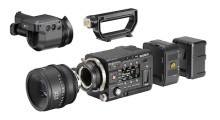
A motion picture camera used to be a light-sealed box with a strip of film running through it. Was it easy to thread? Did it run quiet? How bright was the viewfinder? Today’s cameras are exponentially more complex. They are literal bundles of separate technologies, each lurching forward at a different rate. To understand today’s cameras, you must understand the parts to understand the whole. This is my third annual overview of digital cinema cameras for Filmmaker, and it is being written in the run-up to NAB 2013 in Las Vegas, the world’s largest trade show devoted to digital video […]
-
Festival Cinematography Notes – At Berlin, Back to Black
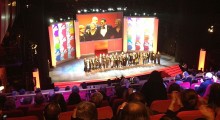
Back in February, I had the privilege of giving two workshops, “Intro to Large-sensor Digital Cinema Cameras” and “Large-sensor Digital Cinema Cameras in Detail” at the 11th edition of the Berlinale Talent Campus. For those not acquainted with this Berlin Film Festival initiative: the Talent Campus each year invites 300 directors, producers, editors, and cinematographers – “talented emerging filmmakers in the first years of their career” – each with a film or two under their belts. Most seem to be in their late 20s. This year over 4,400 applied from 137 countries. Clearly a hot ticket. The 300 lucky ones […]
-
Sidewalk Traffic: Interview with D.P. Dave Kruta
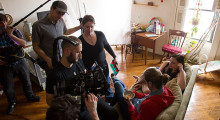
The last time we spoke to David Kruta [DP David Kruta on Shooting the Movie Concussion], he’d just finished DP’ing the independent movie Concussion, which was directed by Stacie Passon. Concussion went on to become an official selection at the 2013 Sundance Film Festival and has secured a distribution deal with The Weinstein Company’s TWC_RADiUS division. Kruta recently talked to us about his latest project, Sidewalk Traffic. Principal photography just ended, and the movie will probably be completed by the end of the year. Filmmaker: What is Sidewalk Traffic? Kruta: Sidewalk Traffic is Anthony Fisher’s first feature film; he’s a […]
-
@SXSW: Digital Bolex and New Beyond the Bolex Documentary
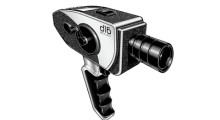
Sharing a booth at the SXSW trade show were the teams behind the forthcoming Digital Bolex RAW-file camera and Beyond the Bolex, a new documentary film by Alyssa Bolsey, whose great grandfather invented the celebrated and influential camera. I stopped by the booth on the last day of the conference, and spoke very briefly to one of its inventors, Joe Rubinstein, above. In my video, Rubinstein says he expects the release of the camera soon. Red Shark News has reproduced a post from the Digital Bolex forum by member James M, who also stopped by the booth and provides more […]
-
Celebrating the Obsolete: Films on Film at SXSW
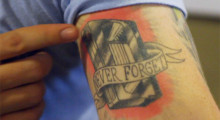
It’s no secret that the independent film industry has been irrevocably altered by the modern financing and distribution landscapes. With new technologies rendering traditional media — both film itself and releasing platforms — obsolete, filmmakers have managed to weave the presence of such nostalgias and tropes into their work. In Josh Johnson’s Rewind This!, which had its world premiere at SXSW, the effects of the home video revolution are dissected by collectors, fanatics, programmers, and critics alike. Andrew Bujalski’s Computer Chess, which screened at SXSW following its world premiere at Sundance, is a comedic period piece in which programmers and […]
-
Kodak Cinema Tools, a Free App for Filmmakers

Kodak has updated their free iOS app Cinema Tools to add a simple Aspect Ratio feature. Using a default picture, or one loaded from your photo library, you can choose from 2-perf, 3-perf, 4-perf and 16mm motion picture film formats and then choose between 2.35:1, 1.85:1, 1.18:1 (16×9) or 1.33:1 (4×3) aspect ratios. The image is then cropped to display the results. Unfortunately, you can’t choose a focal length for the imaginary lens, so the tool is very limited. (For a better web-based example that covers digital cameras, check out AbelCine’s Field of View Comparator.) While several of the tools […]
-
Five Questions with Touba Director Elizabeth Chai Vasarhelyi

Elizabeth Chai Vasarhelyi’s Touba was seven years in the making: five of shooting, two of post-production. It grew out of her second documentary — 2008’s Youssou N’Dour: I Bring What I Love — which followed the legendary Senegalese musician before and after 2004’s Egypt album, whose religious themes raised the ire of the country’s religious argument. Her newest film began life on vibrantly grainy 16mm, following an annual Senegal trek undertaken by hundreds to the city of Touba to visit the home of Sheikh Amadou Bamba, founder of the Mouride Brotherhood. Like her last film, Vasarhelyi’s newest focuses on Islam […]
-
Sony Responds to RED, Blackmagic Fix and Avid Continues to Decline
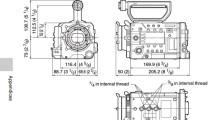
Two weeks ago RED announced that they were suing Sony for patent infringement for technology used in Sony’s PMW-F5, PMW-F55, and F65 cameras. Last week Sony posted a response on their Pro video website. First noting that the F65 has been commercially available for over a year, and that the F5/F55 were announced in October, they go on to say: Sony has now had an opportunity to study Red’s complaint and the asserted patents, and categorically denies Red’s allegations. Sony intends to defend itself vigorously in the Red lawsuit. Sony looks forward to prevailing in court, thus vindicating the Sony […]
-
Oscar-Nominated Cinematographers Discuss Filmmaking

The problem with the Oscars is that you spend three hours watching the show and at the end you haven’t learned anything from the winners about how they did what they did. In celebration of the event, and with congratulations to the winners, here’s some interviews with the nominees for Best Cinematography. One of the interesting themes you’ll note in these articles is that the switch from film to digital remains a hot topic: Anna Karenina | Seamus McGarvey “Anna Karenina was filmed with anamorphic lenses, which require slightly more light, and some of the lighting used is older in style, […]
-
Karaoke Girl’s Visra Vichit-Vadakan and Sandi Sissel

Receiving its world premiere in the 2013 Rotterdam Film Festival’s Tiger Awards Competition, San Francisco-based Visra Vichit-Vadakan’s Karaoke Girl is an evocative character study of a Bangkok working girl, a singer in a nighttime karaoke bar for whom memories of her rural past and dreams of romantic fulfillment form a pulsing lifeline away from an emotionally depleting world. A hybrid documentary/fiction film, Karaoke Girl stars newcomer Sa Sittijun as a character largely based on herself. The documentary sections of the film follow her back to her real hometown, and feature interviews with her real family, while the “fiction” sequences are […]
